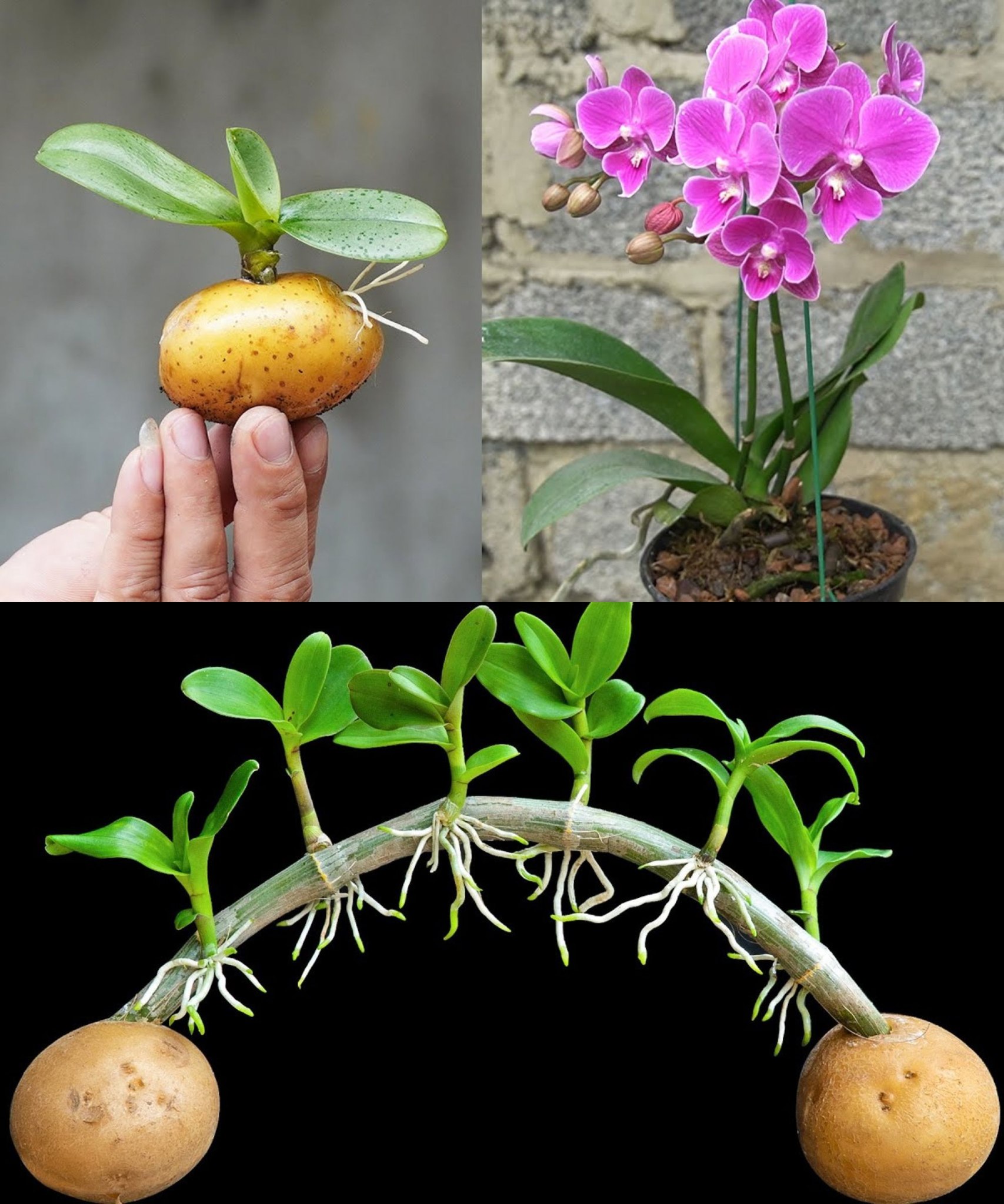Propagating orchids with a potato is not a common or scientifically proven method. Orchids are typically propagated through division, keiki (small plantlets that grow on the mother plant), or from seeds. However, if you’re looking for a simple and natural substrate to encourage orchid growth, you might consider using a different approach. Here’s a step-by-step guide on how to propagate orchids using the keiki paste method, which involves using a potato-based paste to promote the development of keikis:
Materials Needed:
- Orchid Plant
- Keiki Paste or Hormone
- Potato
- Sharp Knife or Blade
- Sterilized Cutting Tool
- Orchid Potting Mix
Steps:
- Select a Healthy Orchid:
- Choose a healthy orchid with strong, mature pseudobulbs. Ensure that the orchid is well-established and in good overall condition.
- Prepare Keiki Paste:
- Keiki paste is a specialized hormone paste designed to encourage the growth of keikis (baby orchids). If you cannot find keiki paste, you can make a DIY version by blending a small piece of potato with water to create a paste-like consistency.
- Sterilize Tools:
- Sterilize your cutting tools (knife or blade) by wiping them with rubbing alcohol or dipping them in boiling water. This helps prevent the introduction of pathogens to the orchid.
- Identify Suitable Pseudobulb:
- Choose a mature pseudobulb with a dormant eye or bud. The eye is a small, undeveloped growth point that has the potential to produce a keiki.
- Apply Keiki Paste:
- Using the sterilized knife or blade, apply a small amount of keiki paste (or the DIY potato paste) to the dormant eye on the pseudobulb. Ensure the paste covers the area around the eye.
- Potting Mix:
- Prepare a suitable orchid potting mix. Orchids prefer a well-draining mix, such as a combination of orchid bark, sphagnum moss, and perlite.
- Plant in a Small Pot:
- Plant the orchid with the treated pseudobulb in a small pot filled with the prepared potting mix. Ensure the pseudobulb is partially buried, leaving the treated area exposed.
- Provide Adequate Care:
- Place the potted orchid in a location with bright, indirect light. Keep the potting mix consistently moist but not waterlogged. Provide the appropriate humidity for orchids.
- Monitor Keiki Growth:
- Over time, monitor the treated area for the development of a keiki. Once the keiki has grown large enough, you can consider separating it from the mother plant and potting it independently.
It’s important to note that this method may not be as reliable as other established propagation techniques. Orchids are delicate plants, and success can vary depending on the orchid species and individual plant conditions. If you’re interested in propagating orchids, it’s recommended to explore established methods such as division or keiki propagation without the use of potato-based paste.
